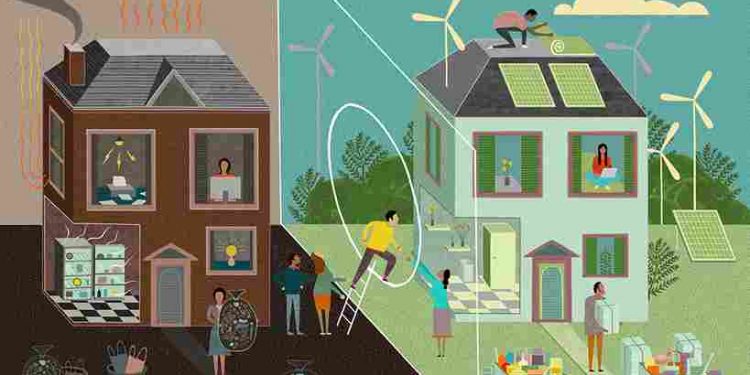Although they can have slightly distinct meanings, the words carbon offset, carbon offset credit, or “offset credit” are used interchangeably. A carbon offset is a decrease in greenhouse gas emissions used to counteract emissions from other sources. It can also be a rise in carbon storage, such as planting trees or restoring land.
A transportable instrument recognized by authorities or independent certifying bodies as representing a decrease in emissions of one metric ton of CO2 or an equivalent quantity of other greenhouse gases is called a carbon offset credit. An offset credit buyer may “retire” the credit to apply the underlying decrease to their greenhouse gas reduction objectives.
The idea behind offset credits is to transfer a net environmental benefit from one organization to another. It makes little difference where GHGs are cut because they mix globally in the atmosphere. Regarding climate change, the consequences are identical if an organization either (a) stops producing emissions or (b) permits an equivalent quantity of emissions to be reduced in another part of the world. The goal of carbon offsets is to lower the cost and increase the ease of adoption of the second choice for enterprises.
Offset claims can only be admissible in specific circumstances. While companies occasionally utilise other investment vehicles to support their claims of reducing greenhouse gas emissions, such as buying “renewable energy credits,” these additional tools typically fall short of the requirements to support credible carbon offset claims.
As a result of the global nature of climate change, carbon offsetting is feasible. Reducing greenhouse gases anywhere helps to safeguard the climate overall since they combine with other gases in the atmosphere.
Utilise the DBS digital banking network to purchase and retire voluntary carbon offsets to combat climate change and control your carbon footprint.
How It Operates
Buying carbon offsets prevents how much CO2 from entering the atmosphere?
Carbon offsets provide funding for specific initiatives that either reduce emissions of CO2 or “sequester” CO2 that is, remove part of the gas from the environment and store it. Reforestation, renewable energy construction, carbon-storing agriculture techniques, trash management, and landfill management are typical initiatives.
One of the most common project types to generate carbon offsets is reforestation. Project owners receive carbon offsets, which they then sell to other parties, such as businesses, to offset the CO2 emissions they cause by paying to eliminate CO2 from another location.
Carbon offsets are simple to comprehend, but creating them is difficult. For a project to be granted carbon offsets, it must demonstrate that it will genuinely lower emissions. Accurate measurements are also required for the quantity of CO2 s prevented from entering the environment.
Standards and procedures that are thoroughly documented are necessary for this process, as it is a reliable method to confirm that the project is accomplishing all of its stated goals. These processes might be costly and exclusive to a certain kind of undertaking. However, without them, we can’t be sure that purchasing carbon offsets contributes to a reduction in atmospheric CO2 levels.
Advantages and difficulties
Carbon offsets are more beneficial than hazardous. Consider a scenario where a business tries to transition from a high-CO2 operation to an expensive, carbon-free technology. Selling these carbon offsets could aid in funding the investment if the company can issue one for each ton of CO2 innovative technology prevents from entering the atmosphere.
Additionally, this idea can be applied on a sectoral, regional, or national level. States, nations, or businesses that have set goals to cut their emissions may purchase offsets from other states, countries, or organisations where cutting greenhouse gas emissions is more affordable. In general, this may result in a lower cost of meeting global emissions objectives.
While carbon offsets provide many appealing advantages, it’s vital to consider the costs and difficulties associated with adopting them, particularly the difficulty of confirming their positive environmental effects.
Evidence of “over-crediting,” or trading offsets that claim greater carbon reductions than they produce, has been discovered in several studies on the offset markets. If businesses and nations utilise carbon offsets as a “get out of jail free card” to avoid reducing their carbon emissions, that is another cause for concern. Nevertheless, offsets can be a helpful weapon in the battle against global warming, provided they are utilized properly.





